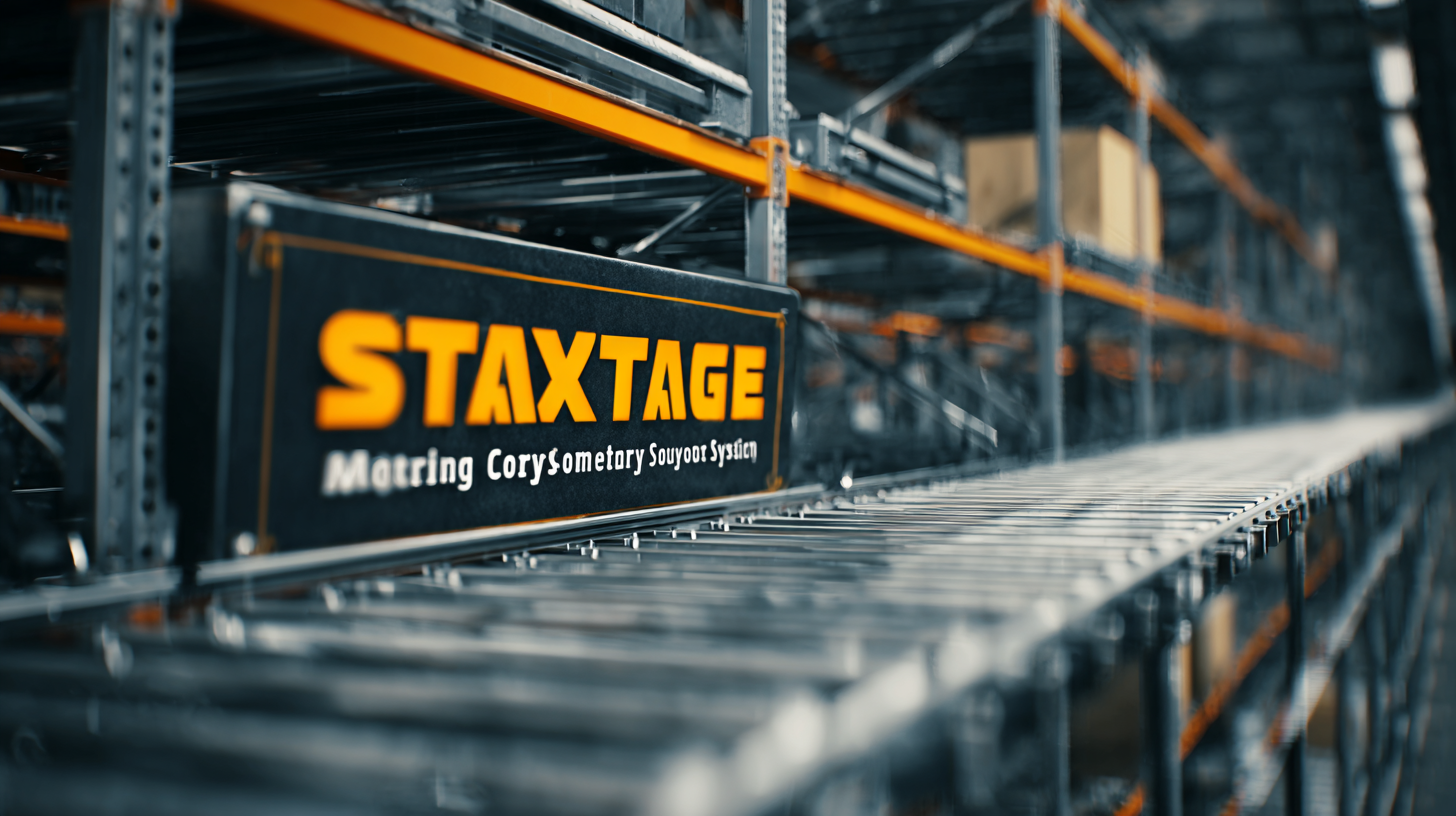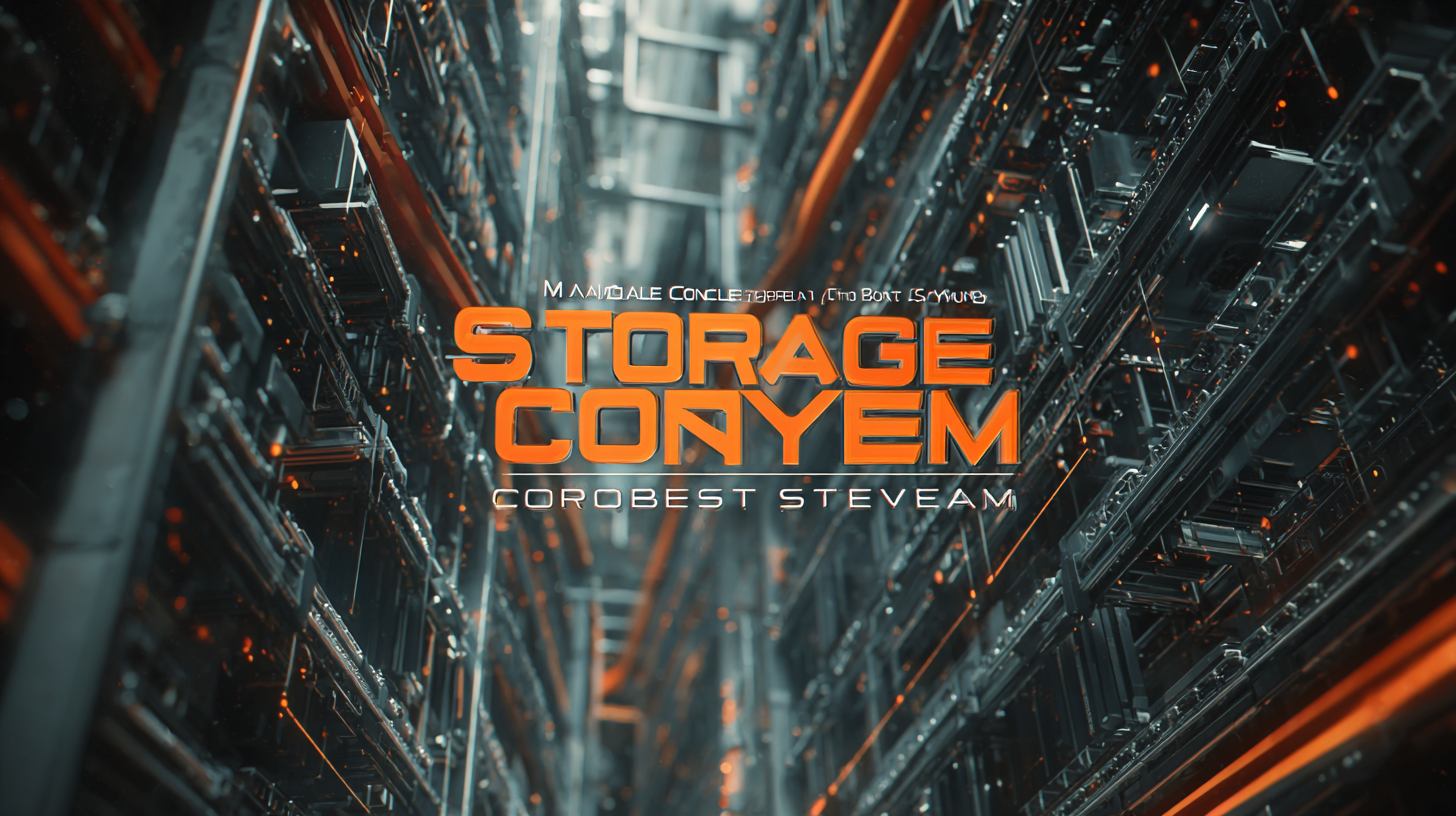In today's fast-paced logistics and manufacturing landscape, optimizing operational efficiency is more critical than ever. A recent study by IBISWorld highlights that the warehousing and storage industry is expected to grow at an annual rate of 6.1% over the next five years, underscoring the skyrocketing demand for innovative solutions. One of the most effective ways to enhance productivity and streamline processes is through the implementation of a robust Storage Conveyor System. These systems not only minimize manual handling—reducing the risk of injuries by up to 64% according to the Occupational Safety and Health Administration—but also significantly decrease product retrieval times. By leveraging the right strategies and technologies, businesses can maximize their Storage Conveyor System investments, leading to improved workflow efficiency and lower operational costs. This blog delves into the best practices and strategic insights to help organizations harness the full potential of their storage conveyor systems for sustained success.

In today's fast-paced industrial environment, the evolution of storage solutions is crucial for optimizing efficiency in warehousing operations. Advanced storage conveyor systems play a pivotal role in this transformation. By automating the movement of goods, these systems not only reduce labor costs but also minimize the risk of errors associated with manual handling. This streamlining of processes enables businesses to respond more swiftly to fluctuating demands, ultimately boosting productivity.
Furthermore, the integration of sophisticated technology within advanced storage conveyor systems enhances inventory management and tracking. Real-time monitoring capabilities allow for better visibility into stock levels, ensuring that businesses can maintain optimal inventory and reduce holding costs. As the global industrial racking systems market continues to expand, investing in modern conveyor solutions will be essential for companies aiming to maintain a competitive edge in their respective industries. Embracing these innovations not only supports the growth of warehousing operations but also aligns with trends towards automation and efficiency in logistics.
In today’s fast-paced industrial environment, the implementation of automated storage solutions has become a pivotal factor in enhancing operational efficiency. By reducing the time spent on manual handling and optimizing inventory management, these systems streamline workflows, allowing businesses to focus on core activities that drive growth. Automated storage solutions not only facilitate faster retrieval of goods but also minimize the risk of human error, thereby ensuring a smoother operation.

Moreover, the integration of advanced technologies such as RFID and AI into storage conveyor systems brings a new level of sophistication. These innovations enable real-time tracking of inventory, allowing businesses to maintain accurate stock levels and improve response times to customer demands. As companies continue to adapt to the evolving market landscape, embracing automated storage solutions will be key to maximizing efficiency and maintaining a competitive edge. Ultimately, the impact of these systems goes beyond mere storage; they redefine the entire operational framework, fostering an agile and responsive business model.
Choosing the right conveyor system is crucial for maximizing efficiency in any industry that relies on storage and transport processes. Key factors to consider include the type of materials you are handling, the layout of your facility, and your specific operational goals. For example, if you are dealing with heavy or bulky items, a heavy-duty roller conveyor might be necessary, while lighter items might be better suited for a belt conveyor system. Understanding the physical properties of the items you are moving can help determine the best fit for your needs.
Another critical aspect is the integration of the conveyor system into your existing infrastructure. Assessing the available space and ensuring that the system can accommodate future growth is essential. Additionally, flexibility in design is vital; a modular system can adapt to changing operations or product lines, allowing for better scalability. By aligning your conveyor choice with both current and future requirements, you'll enhance workflow efficiency and reduce potential bottlenecks in your operations, ultimately contributing to your organization's success.
In recent years, modular conveyor systems have gained significant traction in various industries due to their versatility and efficiency. These systems are designed to be easily configurable, allowing businesses to adapt and optimize their material handling processes without the need for large-scale redesigns. The rise of modular systems is largely driven by the growing need for flexibility in production lines, especially as consumer preferences and market demands change rapidly.
**Tip:** When considering a modular conveyor system, assess your current layout and workflow. Look for areas where integration can streamline operations and reduce bottlenecks. This will ensure that your investment directly addresses your specific needs.
Additionally, the inherent modularity of these systems allows for easier upgrades and expansions. Businesses can add or remove components as necessary, which can significantly lower operational costs over time. This adaptability is particularly advantageous for companies looking to future-proof their operations against evolving industry trends.
**Tip:** Always consult with a conveyor system expert before implementation. They can provide valuable insights on the latest technologies and help you select the best components for your unique application, further enhancing your productivity and efficiency.

When exploring the landscape of storage conveyor systems in China, several real-world case studies stand out as prime examples of successful implementations. These systems have revolutionized operations across various industries, from e-commerce warehouses to manufacturing facilities. One notable case involved a leading e-commerce company that integrated a state-of-the-art storage conveyor system, enhancing their order fulfillment process. The result? A 30% increase in throughput and a significant reduction in order processing times.
To maximize efficiency, companies should focus on customizing their storage conveyor systems to meet specific operational needs. **Tip: Conduct a thorough analysis of workflow patterns to identify bottlenecks and optimize system layout accordingly.** Additionally, investing in employee training can greatly enhance the system’s effectiveness. **Tip: Create interactive training modules that simulate real-life scenarios to ensure team members are well-prepared to handle the conveyor system.**
Another successful example comes from a large manufacturing firm that adopted a modular storage conveyor system. By implementing modular designs, they streamlined their production line while maintaining flexibility for future changes. **Tip: Always choose a system that can be easily expanded or modified, aiding in long-term operational efficiency.** These real-world applications underscore the transformative power of strategically deployed storage conveyor systems in driving success in the dynamic Chinese market.
